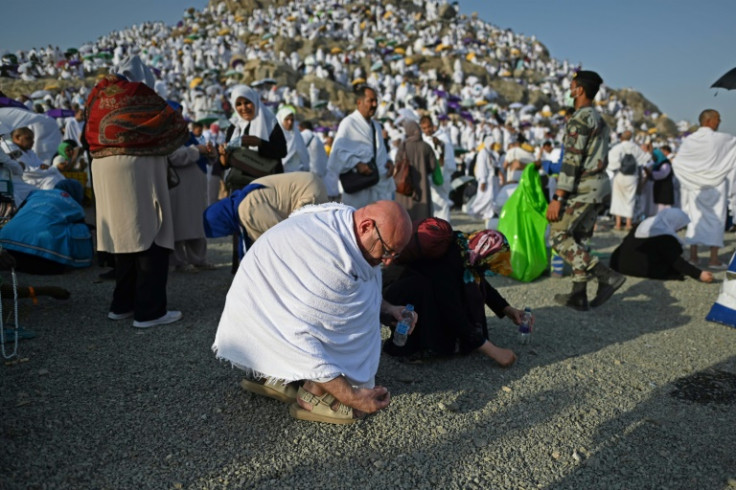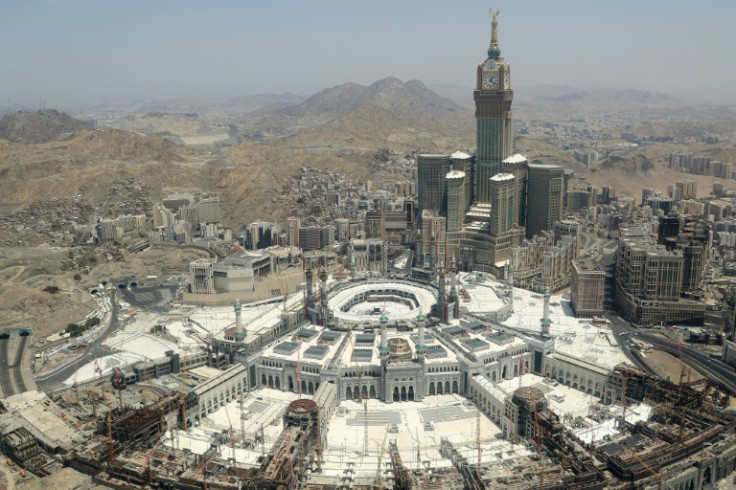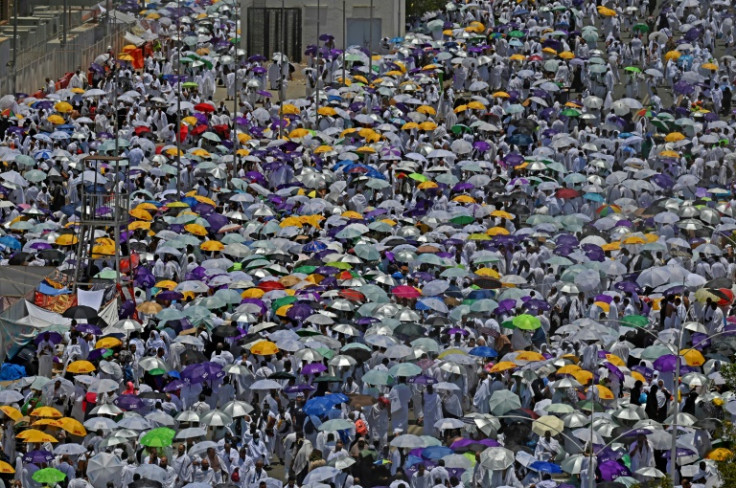Crowds 'Stone The Devil' In Final Hajj Ritual

Massive crowds of robed Muslims gathered for the "stoning of the devil" ritual in Saudi Arabia on Wednesday as the biggest hajj pilgrimage since the pandemic draws to a close.
From dawn, hundreds of thousands of worshippers began pelting pebbles at three concrete monoliths representing Satan, the last major ritual of an event held in severe summer heat.
The pilgrims flocked to Mina, near Mecca, a day after enduring temperatures of 48 degrees Celsius (118 degrees Fahrenheit) as they prayed for hours on Mount Arafat.
"I will not think of doing hajj again until it takes place in winter," Farah, a 26-year-old Tunisian, said of the annual ritual which follows the lunar calendar and doesn't always coincide with summer.
"My body is melting," she said.
More than 1.8 million pilgrims, most of them from abroad, joined the first hajj with unrestricted numbers since pre-Covid in 2019, when 2.5 million took part.
The attendance figure, announced by Saudi officials on Tuesday, falls well short of their predictions of beating the 2019 record.
The hajj is a source of prestige and a major revenue-earner for Saudi Arabia, which is trying to pivot its oil-reliant economy in new directions including tourism.
The devil-stoning marks the start of the three-day Eid al-Adha holiday, celebrated by Muslims by buying and slaughtering livestock to commemorate Abraham's willingness to sacrifice his son.
Afterwards, the pilgrims return to Mecca to perform a farewell "tawaf" -- walking seven times around the Kaaba, the giant black cube at the Grand Mosque that is the focal point of Islam.
Mina's walkways have proven deadly in the past: in 2015, a stampede killed up to 2,300 worshippers in the worst hajj disaster ever. A similar incident killed 364 in 2006.
Other stampedes were reported in 2004, 1998 and 1994. In 1990, the failure of a tunnel ventilation system triggered a huge rush that killed 1,426 pilgrims, mainly from Asia.
There have been no major incidents since 2015, and the site has been extensively remodelled with a multi-storey bridge to allow the pilgrims to access the monoliths safely.
On Wednesday, helicopters buzzed overhead and hundreds of police officers fanned out across Mina's roads to organise the flow of worshippers.
As well as the crowds, scorching conditions have been a major challenge for the worshippers from 160 countries, including many elderly after a maximum age limit was scrapped.
In recent years the hajj has coincided with the Saudi summer, compounded by global warming that has made the desert climate even hotter.
Tuesday's peak of 48 degrees Celsius made it the hottest day at this year's hajj. Experts have warned that temperatures of 50 degrees could become an annual occurrence in Saudi Arabia by the end of the century.
To protect themselves from the heat, many pilgrims walk with umbrellas to shield themselves from the sun, while others carry their folded prayer blankets above their heads.
More than 32,000 health workers are on hand to treat anyone struck by heatstroke or other ailments, authorities say, while bottles of water are being distributed free of charge.
On his way out of Arafat on Tuesday, Egyptian employee Sobhi Saeed, 56, said he was fulfilled but drained as the hajj winds down.
"I am very exhausted. I feel very dehydrated."
The hajj started on Sunday at Mecca's Grand Mosque, Islam's holiest site, before an overnight stay in tents and then the prayers on Mount Arafat, where the Prophet Mohammed is believed to have delivered his final sermon.




© Copyright AFP 2024. All rights reserved.











